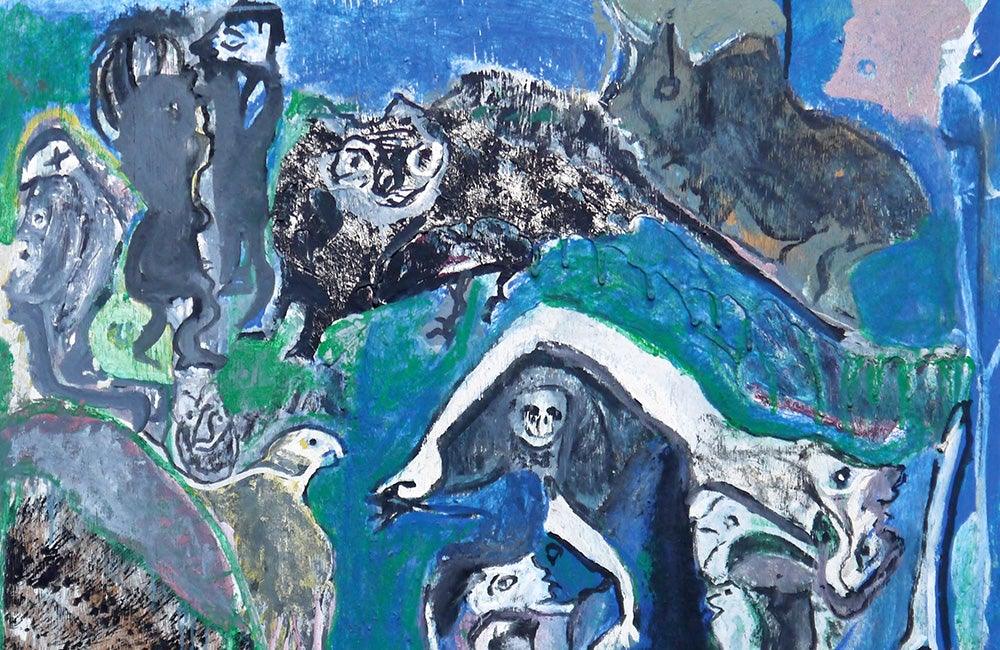First published: Fall 2015
My introduction to the art of the Jamaican Intuitives was unnerving. It was 2006, and I was in Jamaica to attend a music festival. That summer, the National Gallery of Jamaica (NGJ) in Kingston, the capital on the small island country’s southern coast, was presenting “Intuitives III”, a survey of the works of its best-known self-taught artists. It was the third such exhibition this national museum had mounted since 1979, when its then-director and chief curator, David Boxer, who still held those positions in 2006, had organised “The Intuitive Eye”, the first show of this kind. In fact, it was that exhibition that gave the name “The Intuitives”, a term Boxer had coined, to a group of remarkable Jamaican autodidacts. It had featured works by, among others, the painter John Dunkley (1891–1947); the carvers David Miller Sr (1872–1969) and his son, David Miller Jr (1903–1978); the painter and object-maker Everald Brown (1917–2003); and the painter-carver-preacher Mallica Reynolds (1911–1989), who was commonly known as “Kapo”.
 Women, Christopher Harris, 2009, acrylic on paper, 27.6 x 25.2 ins., 70 x 64 cm
Women, Christopher Harris, 2009, acrylic on paper, 27.6 x 25.2 ins., 70 x 64 cm
By the time I arrived in Jamaica, one of the country’s most respected Intuitives, Leonard Daley (1930–2006), had died. To mark his passing earlier that year, the ground floor of the NGJ’s “Intuitives III” show was dedicated to his work.
I wandered into that exhibition by chance. Shamefully ignorant about Jamaican art, I expected little more than an uneventful stroll through the museum. Instead, my heart jumped as I walked in, for the walls of the exhibition’s galleries appeared to be moving and breathing in an explosion of interwoven human and animal figures painted on old pieces of wood and boards. Among the unnameable shapes I encountered were pale faces that seemed to peer out at me from the paintings, along with squawking birds, suckling children and assorted, dark phantoms. Many of the pictures depicted the John Crow, a vulture, which, traditionally, for Jamaicans, symbolises ugliness, evil, disgrace or, above all, death. I learned that Daley had used the John Crow to represent himself in his work, for he respected and identified with the bird. He appreciated its role as a scavenger, which helped clean up the country. To me, his paintings express the raw essence of humanity and life.
I found the “Intuitives III” exhibition to be shocking and breathtaking. It featured the work of 46 Jamaican Intuitives, including visionary pictures by Everald Brown in pure, luminous colours; paintings and sculptures by Kapo; and primeval-looking carvings by William “Woody” Joseph (1909–1998). I had never been so moved or so intrigued as I was by what I discovered in that NGJ show.
This is an article extract; read the full article in Raw Vision #87




